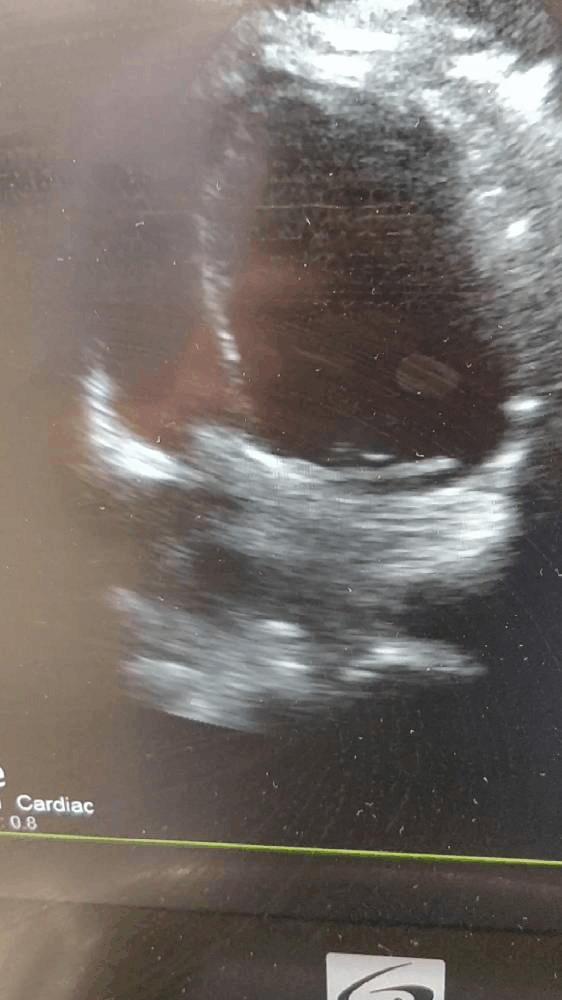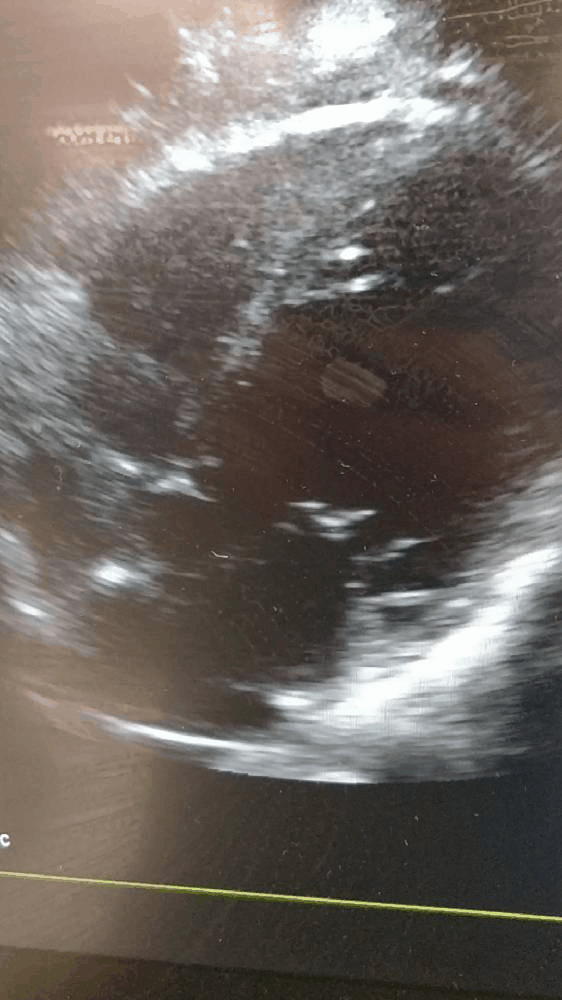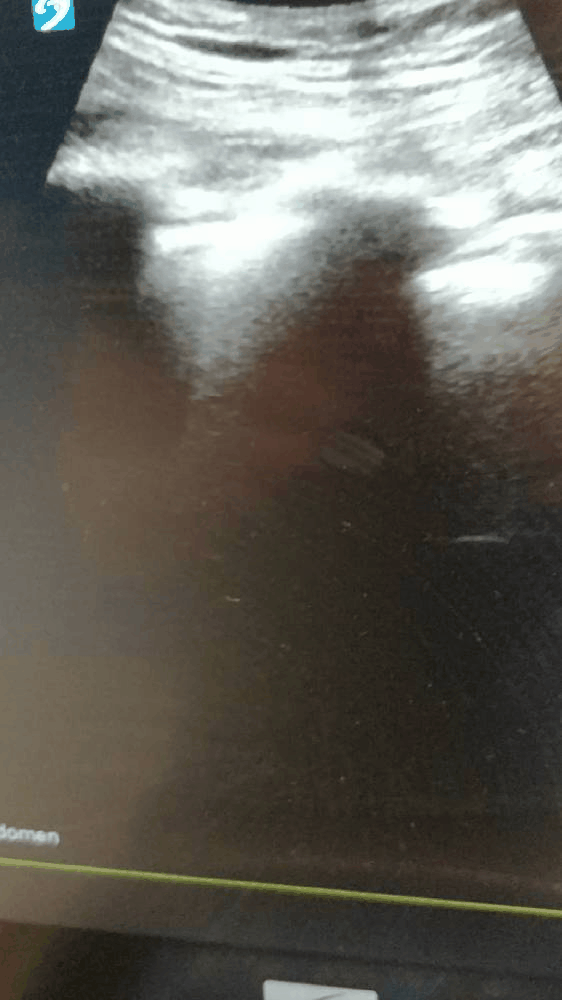Whilst in ED his pain is unremitting despite generous amounts of GTN.
- BP 89/50
- HR 105 SR
- Sat 90%RA
On auscultation he does not have any murmurs and scattered basal creps.
ECG is unchanged from previous records
POCUS is performed to challenge our pre-test probability of Sub/massive PE (by evidence of right heart strain) and/or pulmonary oedema:
The initial concern was for massive PE. The absence of echo features of right heart strain are reassuring. The presence of B lines is suggestive of fluid in the lung parenchyma - this is sensitive but specific. When added together with the history of PND, orthopneoa and the echo appearance of a hypokinetic left ventricle the clinical picture is suggestive of cardiogenic shock.
A formal TTE the next day showed an EF of 40% with global hypokinesis and inferior wall hypokensis.
This gentleman was discharged home to his beloved alpaca the following day with a plan for an outpatient coronary angiogram.





 RSS Feed
RSS Feed
